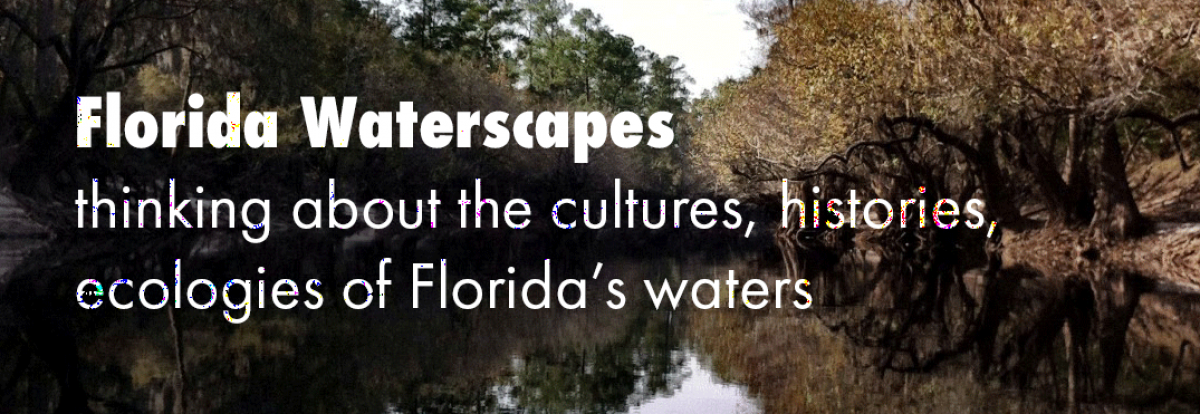
Anne and I rose early to catch the early morning light on Blue Cypress Lake. A late afternoon storm had skunked us on paddling the night before, and we were determined to get on the water. After a quick cup of coffee, we lowered boat and board into the water and paddled through the glassy waters, silently, heading towards the trees that give Blue Cypress Lake its name. (The cypress trees did indeed look blue in the early morning light.) The day was so calm and quiet, I felt like I had melted into the scenery. Other than the one large splash that made both of us jump, the lake was dead calm.




We had spent the night at Middleton’s Fish Camp, right on Blue Cypress Lake, in a cabin that backed onto a canal. Although Blue Cypress Lake is not far from Vero Beach and the more developed coastal area, the lake felt isolated and remote. We had come to take pictures for our River of Dreams exhibit at the Matheson History Museum (Winter 2017). Most people, however, come to Middleton’s Fish Camp to catch large-mouth bass, catfish, and speckled perch (crappie), among other things. Jeanne Middleton, who writes the fishing report, the armored catfish, relatively unknown in Florida, draws fishers from Suriname where the fish is considered a delicacy.

Anne and I had come to Blue Cypress Lake and Middleton’s Fish Camp to explore the headwaters region of the St. Johns River. Officially the headwaters is somewhere in the Fort Drum Marsh Conservation Area, a swampy area that lies just south of Blue Cypress Lake. I had hoped to paddle from the actual start of the St. Johns River, but I learned that noone can really pinpoint the exact start of the river. Vince Lamb, a nature photographer and environmental activist, noted that “somewhere two drops of rain fall, and one heads to Lake Okeechobee and the other heads north into the St Johns.” Many people consider Blue Cypress Lake itself to be the headwaters which, in terms of paddling and navigation, it is. 
The road north from Blue Cypress Lake towards Fellesmere parallels the river as it moved through a series of canals. On Sunday afternoon, boat trailers lined the canal, but the stormy weather and a Monday morning had driven off the fisherman. In Fellesmere, we stopped for some ‘Old Florida Cuisine’ at the Marsh Landing Restaurant.
Fueled by swamp cabbage soup and Cajun-spiced catfish (noone had heard of the armored catfish), we aimed for Stick Marsh/Farm 13, a reclaimed area known for its bass fishing. Created in 1987, Stick Marsh/Farm 13 is one of many Florida messes, like the Everglades, where our tax dollars fund both destruction and restoration at the same time. Writing about the St. Johns River Restoration Project and Stick Marsh, bass fishing guide Jim Porter describes the project as “Saving a Friend.”At one point, Stick Marsh was heavily stocked with bass and crappie, and now the area “is synonymous with trophy bass and other fishing.”
This entire area near the headwaters struck me as a confusing mix of wilderness and engineered landscape. Blue Cypress Lake itself has few access points and felt remote—even Middleton’s Fish Camp felt removed from the nearby more developed coastal areas. But the roads and the canals—obviously engineered—also felt remote and wild as well. The day before, sitting at Camp Holly near Melbourne, Vince had told us that the upper—or southern—part of the St. Johns River is much wilder than the lower, that there is more development along the river as you go further north. It is much easier to do a wilderness paddling trip along the upper St. Johns.

Engineered or not, the headwaters region of the St. Johns River is a beautiful and wild marshy waterscape, and Blue Cypress Lake took my breath away. Each section of the St. Johns River has its own beauty, and the river and the people who live, play, and fish on the river tell me their stories. I look forward to learning more of these stories as I explore the St. Johns and its tributaries and springs for our “River of Dreams” exhibit.






